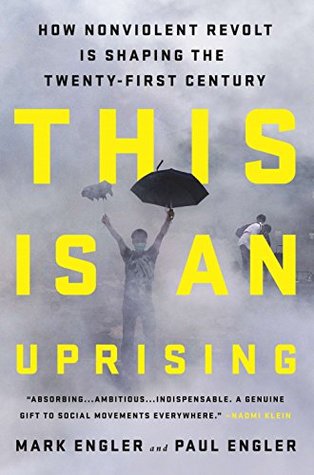More on this book
Community
Kindle Notes & Highlights
by
Mark Engler
Read between
December 12 - December 29, 2022
Many of the critical advances of the last century and a half—the end of slavery, women’s suffrage, the restriction of child labor and implementation of workplace safety standards, and the outlawing of many forms of discrimination—owe less to the legislative endgame that formalized acceptance of these causes and much more to the social movements that put them on the map.
These were not the type of nonviolence trainings typically seen in the United States: short, two- or three-hour affairs intended to prepare people for a single demonstration. Instead, they were courses of ten hours or more, designed to empower participants to operate in their own autonomous, local chapters.
In the future, the severe storms, floods, and ecological dislocations resulting from global warming are set to cause untold billions of dollars in damages. For this reason, there are economic forces lined up on each side of the climate dispute; as the impacts grow ever more extreme and costly, the economic calculus of complying with movement demands continually changes.
If there is a common trait in the most prominent movements of the past century—whether they involved efforts to end child labor, redefine the role of women in political life, or bring down an apartheid regime—it is that they took up causes that established powerbrokers regarded as sure losers and won them by creating possibilities that had not previously existed. As the pillars give way, barriers long seen as too daunting to be overcome suddenly appear surmountable.
On the positive side, Sharp noted, “As tension increases, morale rises and large numbers of formerly passive people become determined to take part in the coming struggle.” Unfortunately, there are less desirable consequences as well. The “previous period of indifference,” Sharp noted, is replaced by one where there is “active antagonism.” Reactionaries who are opposed to the movement’s cause will rise to defend the status quo, mobilizing a backlash. In instances when the backlash is powerful, it can look like activists are worse off for having picked a fight—especially if vocal opposition is
...more
Egypt shows that widespread revolts can do amazing things, but uprising alone is not enough. From Gandhi, to US labor unions in the 1930s, to the civil rights movement, to ACT UP, organizers using nonviolent escalation have grappled with how to put in place lasting mechanisms that can sustain the progress generated by their most high-profile campaigns. This is the challenge of institutionalization. In addressing it, these activists have found that the talent for creating mass unrest must be combined with the skills and perspectives of other organizing traditions in order to formalize and
...more


